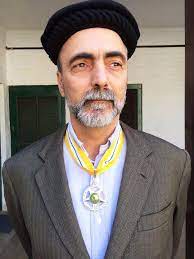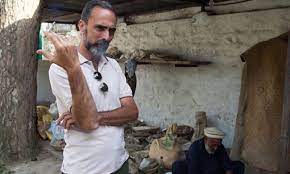The Italian archaeological mission in Pakistan

Abdullah Jan
Islamabad: The Mission has been active since 1955 and is amongst the longest-running archaeological missions in Asia.Since its foundation, the Mission has concentrated its work mainly in the Swat Valley, in ancient Gandhara.To speak of Gandhara in connection with the history of the Mission, means talking first of all aboutGiuseppe Tucci who, with a happy intuition, launched archaeological campaigns in the Swat valley, whichwas then an autonomous kingdom ruled by the enlightened Miangul family. In 1969 the Swat State wasmerged into Pakistan. Today, the Mission is a coordinated activity between ISMEO and Ca’ Foscari University of Venice. Thesources of funding come mainly from these two institutions as well as from the Ministry of University andthe Italian Ministry of Foreign Affairs.
The Mission works in collaboration with the Directorate ofArchaeology and Museums (DoAM), Government of Khyber Pakhtunkhwa, in a framework agreement withthe federal authorities of Pakistan.The Italian Mission is known internationally for its role in the study of Gandharan art and archaeology,settlement and funerary archaeology from protohistory to the Islamic and pre-modern period, rock art andarchival studies. Recent developments in the work of the Mission are the study of paleoclimate (with anongoing project funded by Ca’ Foscari University of Venice) and genomics and bio-archaeology incollaboration with Harvard Medical School and the Max Planck Institute. Swat, with its data collected by theMission, is among the best studied areas of the ancient world in terms of DNA. An outstanding article onthis topic was published in Science in September 2019. From 2011 to 2016, the Mission also executed the ACT-Field School Project in Swat, a Pakistan-Italy DebtSwap Agreement-funded project which also included the reconstruction of the Swat Museum damaged by anattack in 2008 and reopened in 2013, and the restoration of the colossal rock relief of the Buddha ofJahanabad, damaged during the insurgency.The Mission’s main excavation site in Barikot, Alexander the Great’s city of Bazira, has recently seen amajor intervention from the Pakistani provincial government, which acquired the area as a protected heritagesite for future generations.

The ongoing excavation of the ancient city has revealed evidence of the ancientfortified city from the time of Alexander (late 4th century BC) and the walls of Indo-Greek fortifications(mid 2nd century BC). A recent discovery of an apsidal temple from the Maurya period (mid 3rd centuryB.C.) confirms the presence of Buddhism already active in the oldest urban context of Gandhara. Thisdiscovery was listed by the magazine Archaeology (February 2023) as one of the “10 most importantdiscoveries of 2022”.

While the excavation of the city is ongoing, the Mission is active in the restoration ofthe monumental acropolis whose walls in various phases date from the 3rd to the 10th century AD (seephoto) (ISMEO-ALIPH-DoAM project).Two Directors of the Mission (the first and the current one, the late Dr. Domenico Faccenna and Prof. LucaM. Olivieri), and the then President of IsMEO, the late Prof. Gherardo Gnoli, were awarded the PakistaniPresidential ‘Sitara-i-Imtiaz’ (Star of Excellence) Award. Prof. Tucci was awarded the highest civilianaward in Pakistan, the ‘Hilal-i-Imtiaz’ (Crescent of Excellence).





